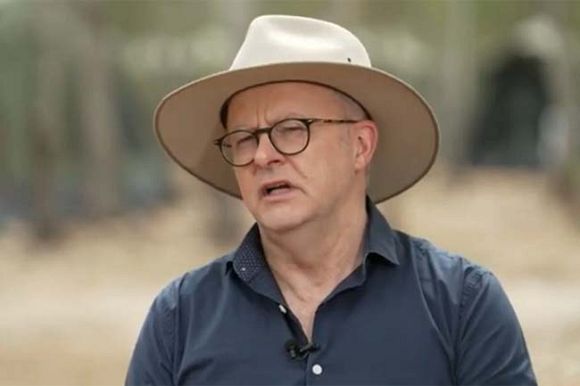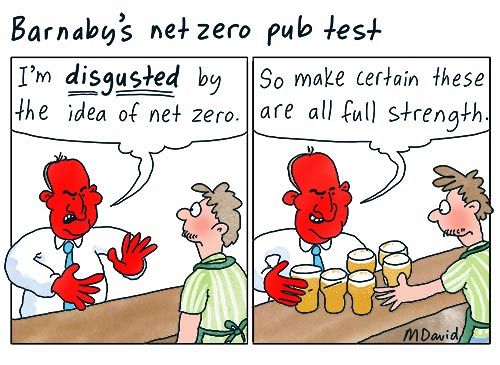With Australia hurtling toward irreversible ecological collapse, the Greens face a defining moment to rise as the nation’s true environmental voice, writes Sue Arnold.
WHAT WILL IT TAKE for the Greens to make Australia’s environmental crises the top party priority?
Australia is facing a critical future with neither Labor, Liberal or National parties focused on the environment, instead pursuing policies of extermination of biodiversity, ecosystems, native forests and public challenges.
At a time when the world is facing the sixth great extinction, terrifying impacts of climate change, dreadful wars, with global efforts by the International Court of Justice to ensure nation states pass laws protecting the right to life of humanity, Australians are living in a false reality driven by the current governments.
Prime Minister Anthony Albanese and state Labor governments work in total harmony, ensuring weak environmental legislation is made even weaker to protect greed and growth.
In an email sent to many environmental organisations, Jenny Weber, campaign manager for the Bob Brown Foundation, summed up the problem, indicating that looming environmental disasters and the concerns of conservation organisations are ‘deliberately sidelined’ as the Albanese Government moves to introduce new environmental legislation.
Weber writes:
‘The corporate sector is being given a dominant role in government discussions.’
Citing the 2020 Independent Review of the EPBC Act, Weber writes:
‘[Professor Graeme] Samuel called on the Government to abolish the exemption from environmental laws for native forest logging covered by regional forest agreements.’
Nothing changed. Samuel’s recommendation was ignored by both Coalition and Labor governments, native forests continue to be industrially logged with plans afoot to burn forests for “renewable energy” and/or use as offsets for carbon emissions. Since Albanese’s electoral victories, the state of the environment and promised legislation are nothing more than a word sandwich. Take native forests as just one example.
The Bob Brown Foundation statistics on Tasmania’s horrific native forest logging say it all. Between 2025-28, 46,745 hectares are threatened to be logged, 157 coupes are verified habitat for threatened species. An appalling 78.26 per cent will be woodchipped, exported to Taiwan and China, with the public denied information on what woodchips are used for. It’s likely the chips are transformed into paper, cardboard or fed to furnaces.
A map of Tasmania’s logged forests on the foundation’s website of Tasmania’s forests being destroyed says more than a thousand words.
New South Wales, under the Minns Labor Government, has a tsunami of evidence of its environmental destruction policies.
Big chunks of native forests in New South Wales are now described as “plantations”, thus further removing any legal protection for the forest fauna and their habitats.
At a Legislative Council hearing in 2023, NSW Environment Minister Penny Sharpe confirmed the Government’s support for plantation forestry, on the basis that the trees were “put in the ground to be harvested”, further stating the Government “must be very clear about what is plantation and what is native forestry and the way in which that is managed”.
Sharpe continued:
For all of the talk about the support for plantation, we have plantation trees that have been growing for many years that are ready to be harvested. We must work with that. Obviously, we need rules about how that harvesting occurs, as well as an absolute precaution in relation to any threatened species.
But it is important to draw the distinction because I am asked about it every single day. We must be very clear that we will be very careful. We are working closely with Forestry Corporation on the operation of planned forestry activity into the future. Importantly, plantation timber – which everyone seems to agree we need – must be allowed to be harvested.
At the same hearing, Minister for Agriculture Tara Moriaty said:
“The forestry and wood products industry in New South Wales is one of the state’s key levers for economic recovery and net zero emissions and is central to the viability of many regional communities.”
Needless to say, there are no climate triggers in NSW environmental, forest, plantation or biodiversity legislation. Minister Moriaty speaks with a forked tongue since it’s impossible to have net zero emissions by logging native forests.
Dr Tim Cadman, who has worked tirelessly on exposing the ongoing conversion of native forests to plantations, says:
“Regrettably, the current regulatory environment in the NSW plantation estate facilitates incremental deforestation and forest degradation, with cumulative impacts at the landscape level.”
The rapidly disappearing koala is significantly impacted by the ongoing seizure of native forest for plantations.
Dr Cadman says:
There is a common misconception that koalas do not live in plantations and that plantations do not make suitable koala habitat. In NSW many plantations contain significant numbers of original trees, and constitute high diversity nutrient-rich sites, attractive to koalas. There is also a belief that the forest industry requires plantation and these plantations must be part of the industry going forward. Regrettably, the NSW Government has to date declined to accept the high conservation value of the plantation for koalas.
According to the Native Conservation Council, a renewed effort by Verdant Earth Technologies to restart the Redbank Power Station at Singleton to burn native vegetation for fuel demonstrates the Labor Government’s further indifference to the significant destruction of biodiversity habitat. In the first four years of operation, native vegetation primarily from land clearing will provide the bulk of fuel. Verdant proposes converting up to 72,000 hectares of land to produce biomass crops long term.
In 2022, the Land and Environment Court rejected Verdant’s attempts to obtain approval. But as always, the Government has provided a loophole. The Redbank proposal is now designated as a state significant development requiring Independent Planning Commission (IPC) approval. The public has limited power to challenge decisions. The IPC has attracted strong criticism for its exceptionally high rate of approvals for devastating environmental projects.
The Australia Institute submission summed up the proposal:
The current proposal is by Verdant Earth, formerly known as Hunter Energy. Both companies feature “colourful banking identity” Richard Poole, who gained some of his reputation for colour through dealings with the corrupt former NSW Government minister Eddie Obeid. Verdant/Hunter also has links to controversial former Chief Minister of the Northern Territory Adam Giles. Despite having overseen increases in Northern Territory emissions, Mr Giles suddenly became “determined to do something” about climate change once out of office and Chairman of Redbank’s owners.
This background is relevant because it indicates that Redbank is not, and has never been, a proposal based on sustainable and responsible power generation, or even basic economic viability. It has always been a project of experimentation and speculation — people looking to profit from quirks of policy or energy markets at the expense of the community and environment.
Environmental degradation facilitated by governments spreads across the nation. Queensland under a Liberal Government fares no better. Land-clearing figures show the state remains the ‘deforestation capital of Australia’.
An area more than 1,000 times the size of the Sydney CBD was bulldozed in 2022-23. Conservation groups report that almost half of the clearing was in Great Barrier Reef catchment areas. The figures show that 33,000 hectares of bulldozed woodland and forest were left unexplained.
The Australian Conservation Foundation said the destruction of remnant forests and woodland is catastrophic for the state’s wildlife.
Meantime, the latest research shows the Great Barrier Reef coral cover has declined significantly following a bleaching event in 2024. Experts say the Reef faces a volatile future.
With no climate change trigger in federal or state legislation, zero intention of a federal trigger according to Albanese’s public statements, the future survival of Australia’s environmental heritage is unpredictable. The existing evidence demonstrates the nation is on the precipice of massive, potentially irreversible environmental crises.
It’s time for the Greens to act on the sheer extent of public and scientific concern, to stand up for life in this ancient land. Ensuring an environmentally sound future must be the primary goal of the Greens. If the party doesn’t start biting the growing proverbial bullet, any opposition to the current major parties’ environmental vandalism will be tossed in the political garbage bin.
What will it take to find a loud, effective voice that forces change?
Sue Arnold is an IA columnist and freelance investigative journalist. You can follow Sue on Twitter @koalacrisis.
Related Articles






